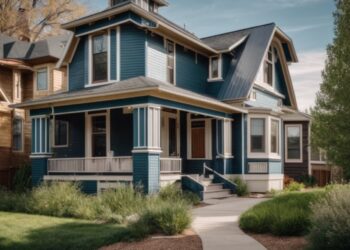Embark on a journey into the world of roofing siding contractors, where expertise meets craftsmanship. From material selection to installation processes, this guide will unveil the secrets behind finding the perfect contractor for your project.


Roofing Siding Contractors Overview
Roofing siding contractors play a crucial role in construction projects by specializing in the installation, repair, and maintenance of roofs and siding for residential and commercial buildings. They ensure that the building envelope is properly sealed and protected from the elements. These contractors offer a wide range of services, including:Services Offered by Roofing Siding Contractors
- Roof installation and replacement
- Siding installation and repair
- Gutter installation and maintenance
- Roof and siding inspections
- Storm damage repairs
Materials Used in Roofing and Siding
- Asphalt shingles
- Metal roofing
- Vinyl siding
- Fiber cement siding
- Cedar shakes
Experience and Expertise
Roofing siding contractors with years of experience and a proven track record are more likely to deliver high-quality work. Their expertise allows them to handle various challenges that may arise during the project, ensuring that the work is done efficiently and effectively.Certifications and Licenses
Reputable roofing siding contractors should possess the necessary certifications and licenses to operate legally and safely. These certifications demonstrate that the contractor has met certain standards and requirements set by industry organizations and regulatory bodies. Examples include certifications from manufacturers for specific products, as well as licenses from local authorities to perform construction work.Roofing Siding Installation Process
Installing roofing and siding is a crucial part of any construction project, as it protects the building from weather elements and enhances its overall appearance. The installation process requires precision, skill, and attention to detail to ensure a successful outcome.Step-by-Step Installation Process
- 1. Preparation: The first step involves preparing the surface by removing any old roofing or siding materials and ensuring the area is clean and free of debris.
- 2. Measurement: Accurate measurements are taken to determine the amount of roofing and siding materials needed for the project.
- 3. Installation of Underlayment: A waterproof underlayment is installed to provide an extra layer of protection against water infiltration.
- 4. Roofing Installation: Roofing materials are carefully installed, starting from the bottom and working upwards to ensure proper drainage.
- 5. Siding Installation: Siding panels are installed horizontally or vertically, following manufacturer guidelines for proper alignment and spacing.
- 6. Flashing and Trim Installation: Flashing is added to vulnerable areas such as roof intersections and windows, while trim is installed for a finished look.
- 7. Finishing Touches: The final step involves inspecting the installation for any gaps, leaks, or imperfections and making necessary adjustments.
Common Challenges and Tips for Success
- Challenges: Weather conditions, inaccurate measurements, and inadequate preparation can pose challenges during the installation process.
- Tips for Success:
- Ensure proper ventilation to prevent moisture buildup.
- Use high-quality materials to ensure durability and longevity.
- Follow manufacturer guidelines and best practices for installation.
- Regularly inspect the installation for any signs of damage or wear and tear.
- Work with experienced and reputable contractors to ensure a professional installation.
Maintenance and Repair Services
Regular maintenance is crucial for the longevity and functionality of roofing and siding. It helps identify and address issues early on, preventing costly repairs down the line. Here are some common maintenance tasks and repair services provided by roofing siding contractors:Common Roofing Issues
- Leaking roofs: Water stains on ceilings or walls can indicate a leak in the roof that needs immediate attention.
- Missing or damaged shingles: Shingles that are cracked, curling, or missing can leave your roof vulnerable to water damage.
- Pooled water: Standing water on the roof can lead to deterioration and leaks, highlighting drainage issues.
Common Siding Issues
- Cracks or holes: Damage to siding can allow moisture to seep in, causing rot and mold growth.
- Warped or buckling siding: This can be a sign of underlying issues, such as water damage or poor installation.
- Fading or discoloration: Over time, siding can become discolored due to exposure to the elements, affecting the aesthetics of your home.
Tips for Homeowners
- Inspect your roof and siding regularly for any signs of damage, such as leaks, cracks, or missing pieces.
- Trim overhanging trees to prevent branches from damaging your roof or siding during storms.
- Clean gutters and downspouts to ensure proper drainage and prevent water buildup on your roof.
- Consider scheduling professional inspections and maintenance at least once a year to catch any issues early.















